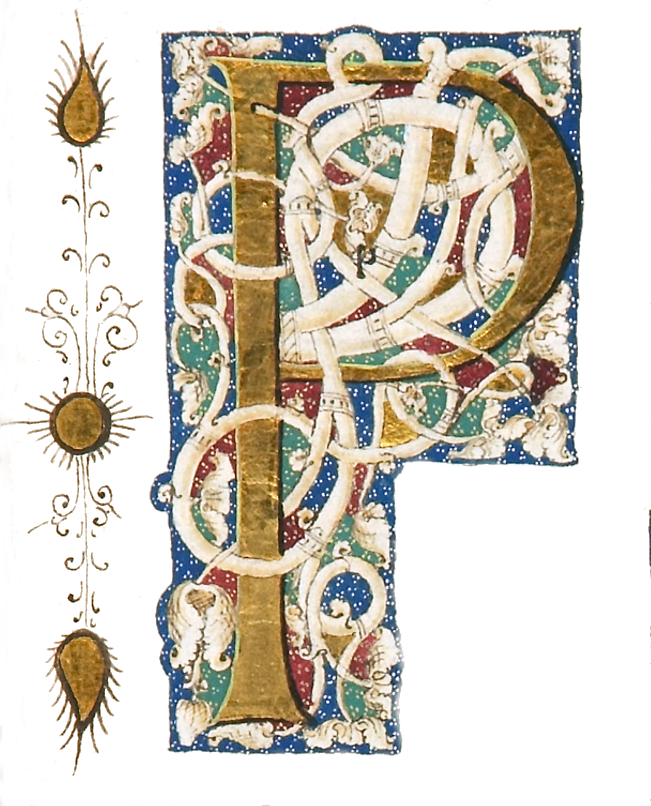1885 · London
by PATER, WALTER
London: Macmillan and Company, 1885. FIRST EDITION. 205 x 137 mm. (8 x 5 1/2"). Two volumes..
VERY PRETTY FRENCH CONTEMPORARY GREEN STRAIGHT-GRAIN MOROCCO, BLIND STAMPED, GILT, AND INLAID, covers with blind-rule border and blind-stamped frame, central lozenge of inlaid red morocco decorated with gilt and inlaid citron morocco quatrefoil, raised bands, spine panels with onlaid red or citron morocco floral ornament, gilt lettering, turn-ins with gilt palmette roll, marbled endpapers, top edges gilt. Front pastedowns with engraved armorial bookplate of Jean S. Armour and A. Watson Armour, III. See: Pater, "Marius the Epicurean," edited by Harold Bloom (New York, 1970), p. x; Day, "History of English Literature 1837 to the Present," pp. 144-45." Spines slightly and uniformly sunned, leaves faintly browned at edges because of inferior paper (as no doubt in all copies), otherwise an extremely fine set, the bindings extremely lustrous and scarcely worn, and the text with very ample margins.
This is a handsomely bound copy of a work literary critic Harold Bloom called "one of the more remarkable fictional experiments of the late nineteenth century." The story is an account of the spiritual and aesthetic journey of a fictional citizen of Marcus Aurelius' Rome who examines Epicureanism, Stoicism, and Theism before finally embracing Christianity. According to Day, "like his creator, Marius is an idealist, seeking to transcend the sordidness of his real world. . . . Yeats considered this work 'the only great prose in modern English.'" Although Pater (1839-94) was an unusually shy and retiring academic, he wrote about his ideal of the aesthetic life and his love for beauty in such passionate and polished prose that his writings developed a significant following that included the Pre-Raphaelites. Britannica says that "at the time of his death Pater exercised a remarkable and a growing influence among that necessarily restricted class of persons who have themselves something of his own love for beauty and the beautiful phrase. . . . The cumulative richness and sonorous depth of his language harmonized intimately with his deep and earnest philosophy of life; and those who can sympathize with a nervous idealism will always find inspiration in his sincere and sustained desire to 'burn with a hard, gem-like flame,' and to live in harmony with the highest." Although the pleasing contemporary bindings here are unsigned, they were done with remarkable skill, and the rich green, red, and gold morocco make an attractive statement on the shelf. This copy was previously owned by the glamorous Chicago socialite Jean S. Armour (1914-63) and her husband, A. Watson "Butch" Armour, III (1908-91), whose family founded the Armour and Co. meatpacking empire.. (Inventory #: ST20153)
VERY PRETTY FRENCH CONTEMPORARY GREEN STRAIGHT-GRAIN MOROCCO, BLIND STAMPED, GILT, AND INLAID, covers with blind-rule border and blind-stamped frame, central lozenge of inlaid red morocco decorated with gilt and inlaid citron morocco quatrefoil, raised bands, spine panels with onlaid red or citron morocco floral ornament, gilt lettering, turn-ins with gilt palmette roll, marbled endpapers, top edges gilt. Front pastedowns with engraved armorial bookplate of Jean S. Armour and A. Watson Armour, III. See: Pater, "Marius the Epicurean," edited by Harold Bloom (New York, 1970), p. x; Day, "History of English Literature 1837 to the Present," pp. 144-45." Spines slightly and uniformly sunned, leaves faintly browned at edges because of inferior paper (as no doubt in all copies), otherwise an extremely fine set, the bindings extremely lustrous and scarcely worn, and the text with very ample margins.
This is a handsomely bound copy of a work literary critic Harold Bloom called "one of the more remarkable fictional experiments of the late nineteenth century." The story is an account of the spiritual and aesthetic journey of a fictional citizen of Marcus Aurelius' Rome who examines Epicureanism, Stoicism, and Theism before finally embracing Christianity. According to Day, "like his creator, Marius is an idealist, seeking to transcend the sordidness of his real world. . . . Yeats considered this work 'the only great prose in modern English.'" Although Pater (1839-94) was an unusually shy and retiring academic, he wrote about his ideal of the aesthetic life and his love for beauty in such passionate and polished prose that his writings developed a significant following that included the Pre-Raphaelites. Britannica says that "at the time of his death Pater exercised a remarkable and a growing influence among that necessarily restricted class of persons who have themselves something of his own love for beauty and the beautiful phrase. . . . The cumulative richness and sonorous depth of his language harmonized intimately with his deep and earnest philosophy of life; and those who can sympathize with a nervous idealism will always find inspiration in his sincere and sustained desire to 'burn with a hard, gem-like flame,' and to live in harmony with the highest." Although the pleasing contemporary bindings here are unsigned, they were done with remarkable skill, and the rich green, red, and gold morocco make an attractive statement on the shelf. This copy was previously owned by the glamorous Chicago socialite Jean S. Armour (1914-63) and her husband, A. Watson "Butch" Armour, III (1908-91), whose family founded the Armour and Co. meatpacking empire.. (Inventory #: ST20153)






![BIBLIOTHECA PHILLIPPICA. [with] MUNBY, A. N. L. PHILLIPPS STUDIES](https://d3525k1ryd2155.cloudfront.net/h/228/806/1678806228.0.m.jpg)
